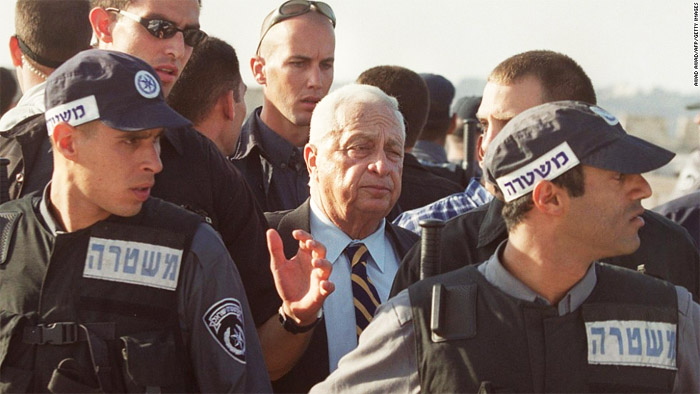
|
http://www.palestinefacts.org/pf_1991to_now_alaqsa_start.php
Che cosa ha dato il via all'Intifada di al-Aqsa nel settembre 2000?
Nel luglio del 2000, Yasser Arafat uscì dai colloqui di pace di Camp David e iniziò piani per per riprendere la lotta armata. Il 27 Settembre 2000 il Sergente David Biri, 19 enne, di Gerusalemme, venne ferito a morte nei pressi di Netzarim nella striscia di Gaza dall'esplosione di una bomba. Il giorno dopo, 28/9, nella città cisgiordana di Kalkilya, un ufficiale di polizia palestinese in pattuglia congiunta con la polizia israeliana ha aperto il fuoco e ucciso la sua controparte israeliana. Sempre il 28 settembre 2000, Ariel Sharon ha visitato il Monte del Tempio di Gerusalemme. Questa visita è diventata il pretesto per istigare le dimostrazioni su larga scala, l'inizio dell'intifada al-Aqsa. http://news.bbc.co.uk/onthisday/hi/dates/stories/september/28/newsid_3687000/3687762.stm
On this day, by BBC News: 28 September
2000: 'Provocative' mosque visit sparks riots Palestinians and Israeli police have clashed in the worst violence for several years at Jerusalem's holiest site, the compound around Al-Aqsa mosque. The violence began after a highly controversial tour of the mosque compound early this morning by hardline Israeli opposition leader Ariel Sharon. Under heavy guard, Mr Sharon entered the compound with a right-wing Likud party delegation. He crossed from the west side of the compound to the east and back again, to the sound of enraged protests from demonstrators outside. BBC correspondent Hilary Andersson said the visit was clearly intended to underline the Jewish claim to the city of Jerusalem and its holy sites.
Dangerous step The site of the Al Aqsa mosque and its compound, known as Temple Mount to Jews and Haram al Sharif to Muslims, is sacred to both religions. It lies on territory captured by Israel in the 1967 war, and is at the heart of the fierce dispute over the sovereignty of Jerusalem. As he left the compound, Mr Sharon denied the visit was provocation, insisting he had come with a "message of peace". "I came here to the holiest place of the Jewish people in order to see what happens here and really to help the feeling that we are now ready to move forward," he said. But Palestinian leader Yasser Arafat described his visit as a "dangerous step".
Rubber bullets Soon after Mr Sharon left the site, the angry demonstrations outside erupted into violence. Israeli police fired tear gas and rubber-coated metal bullets, while protesters hurled stones and other missiles. Police said 25 of their men were hurt by missiles thrown by Palestinians, but only one was taken to hospital. Israel Radio reported at least three Palestinians were wounded by rubber bullets. The violence comes at a highly sensitive time for the Israeli-Palestinian peace talks. The Israeli Prime Minister, Ehud Barak, outlined his vision for Jerusalem for the first time today in a newspaper interview. He said he would be willing to accept two capitals - a Palestinian-controlled Al Quds next to an Israeli Jerusalem - as part of a possible peace agreement. The peace process has been stalled over the issue of Jerusalem since the failure of the Camp David summit in July this year. However, Mr Barak insisted he would not hand over the Temple Mount compound to Palestinian sovereignty.
In Context Following Friday prayers the next day violence again broke out throughout Jerusalem and the West Bank. It was the beginning of a wave of rioting which escalated into what is now known as the second Palestinian intifada (uprising), or sometimes the Al Aqsa intifada. By the end of the first year, more than 800 people had died. Critics say Mr Sharon knew the visit would trigger the ensuing violence and gambled on the Israeli public turning to a tough leader like him who would know how to handle it firmly. 0n 6 February 2001 he won a landslide victory, pledging to achieve "security and true peace" while insisting he would not be bound by previous negotiations with the Palestinians. In June 2002 following a series of suicide bombings, work began on building a security wall, 640 km (440 miles) long, between Israel and the West Bank. An effort to revive the peace process resulted in the publication of a new roadmap for peace in April 2003.
|